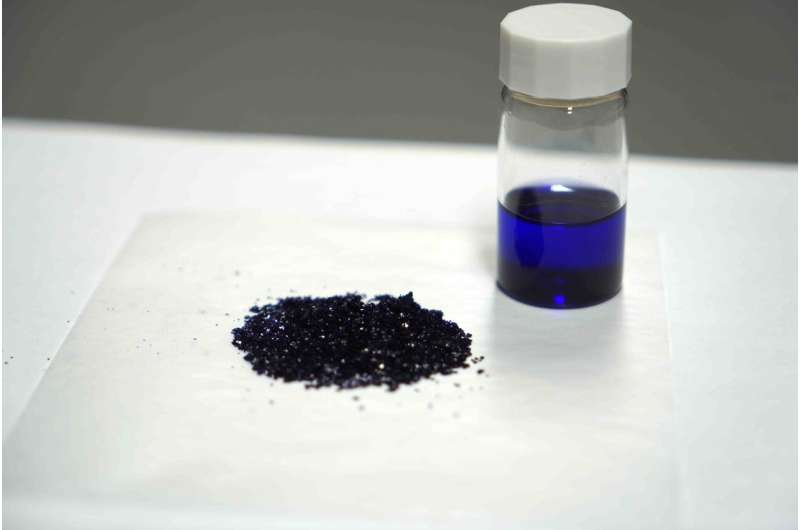Direct synthesis of azulene continues to reveal alluring properties

Azulene is a pretty neat substance. As the name suggests, it displays a peculiar blue color. First synthesized in the 1930s, azulene has been used in medicine for its bioactive properties. Now azulene derivatives are being studied for use in organic electronics such as n-type semiconductors, solar cells and non-linear optics. This is made possible by the functionalization of the azulene ring. Odd-positions of the ring had been researched extensively for their high reactivity, though it was hard to select their functionality due to their electronic properties. Highly functionalized azulenes were enabled by cross-coupling reactions of even-numbered positions of azulenes. However, it has been difficult to synthesize these precursors.
Associate Professor Taku Shoji at Shinshu University et al. was successful in direct synthesis of 2-arylazulene. One of the few researchers who specialize in azulene synthesis, Professor Shoji states that the breakthrough in this study allows for the synthesis of azulene on a gram-scale instead of milligrams. The previous possible production volume made it difficult for possible use in organic electronics. Being able to synthesize azulenes from readily available 2H-cycloheptafuran-2-one derivatives and silyl enol ether is a great step forward in practical applications.
The fluorescence of the azulene derivatives in acidic conditions (which can be seen in the photo) was observed unexpectedly during this study. Though this property of azulene derivatives had been previously reported, the research group found that 2-phenylazulenes exhibit the emission in acidic media and the fluorescence wavelength depends on the electronic properties of the substituents on the substituted benzene ring. The group is collaborating with photochemical experts to elucidate the mechanism of this unexpected fluorescence.
Professor Shoji and his team continue to attempt to synthesize 2-arylazulene at a lower temperature using an appropriate catalyst. Professor Shoji states that "although azulene have been studied for a hundred years, new synthetic methods, reactivity and physical properties continue to be discovered." He remains fascinated by what this mysterious blue substance can reveal and ultimately be applied for.

More information: Taku Shoji et al, Direct synthesis of 2-arylazulenes by [8+2] cycloaddition of 2H-cycloheptafuran-2-ones with silyl enol ethers, Chemical Communications (2019). DOI: 10.1039/C9CC09376A
Journal information: Chemical Communications
Provided by Shinshu University




















